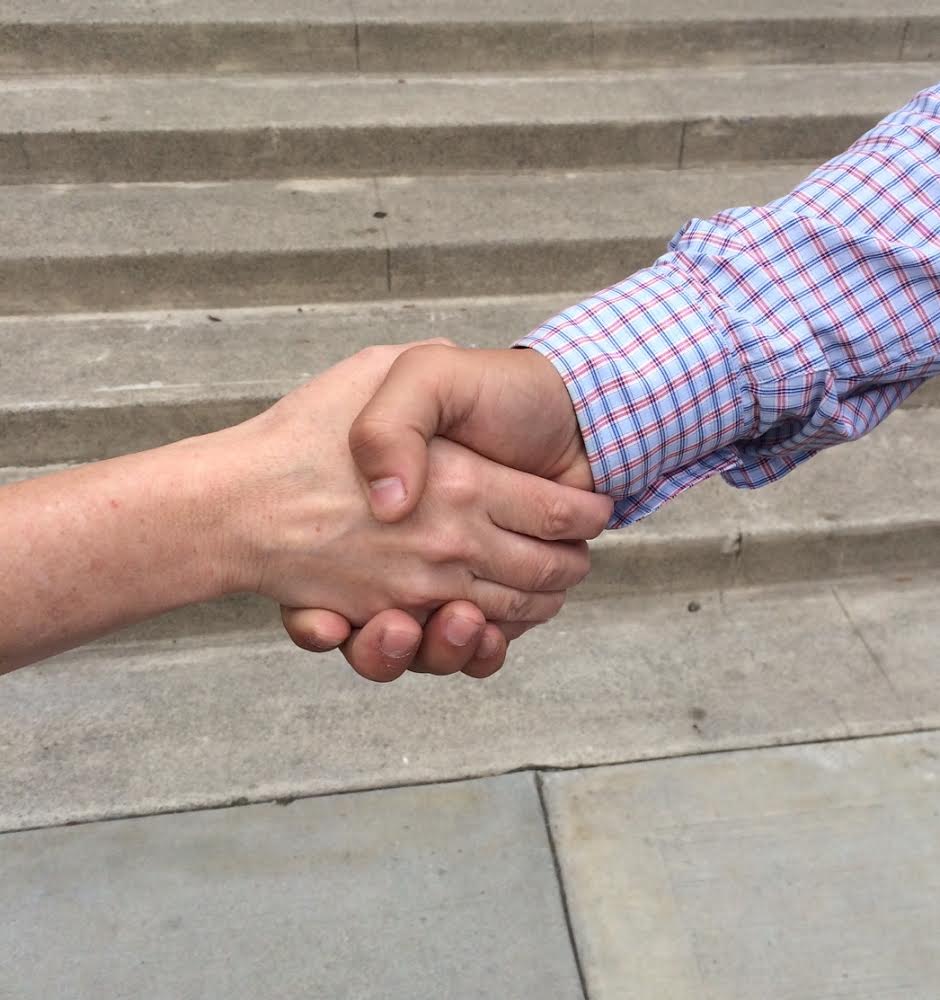Eye Contact is Crucial in Communication Success

Making eye contact is a natural part of daily life for most people. You probably don't even realize how many times each day you do it.
When you look directly at someone with a relaxed facial expression you use one of the best methods of acknowledging that person. It is a vital component of every meaningful conversation.
Creating Connections
Have you ever noticed how babies meet or follow your gaze? If you look directly at a baby, they will look into your eyes. Look away, and they follow your eyes to the change of direction. Studies support this, proving that eye contact is a natural, human habit.
Why? Because humans want connections with other humans. And the eyes have it.
This is where the term "love at first sight" comes from. The simple act of locking eyes with someone lets you know instantly if there is an attraction. The longer the eyes meet, and the frequency of those glances, are a telltale sign of how strong the attraction is. Keep this in mind the next time you attempt to get the attention of a potential special someone.
Eye Contact Opens and Closes Communication
When you first meet someone, etiquette guides you to look them in the eye as you shake hands. It's a global response indicating that you acknowledge this person and validate their presence. You are giving the gift of two things all humans crave – acknowledgement and validation – with one look and the touch of your hand.
At a recent coaching and network event a student commented to a person with whom he was shaking hands, “You know, you looked away and lost my eye contact. Doesn’t that negate your handshake?”
Because it was a learning event, I had encouraged feedback with one another, so the person’s comment was considered polite. The operating rule is: the eyes stay connected until the handshake ends.
Communication scholars agree with our own experience, that eye contact, as a medium in conveying presence, emotion, and intention plays a vital role in communication. It also helps you remember what is being said and works against distraction.
When you establish visual contact with someone else, you signal that you
- are listening
- are attentive
- are interested in the other person
- the other person is important.
Connecting Through Facial Expressions
Eye contact is a vital part of your facial expression and integral to the curiosity of wanting to connect with another. When your face is relaxed and holds a smile, your eyes appear warm and accepting. Using that expression while looking directly at someone acknowledges that person and makes you someone they will remember.
However, when you have something more serious or solemn to say, a gentle locking of eyes lets the other person feel your respect for them, even though you might be at odds on the message.
People who are sight-challenged naturally angle their face in the direction of the person with whom they are shaking hands or talking. “Eye contact” then means turning the face in the direction of the sound of the voice of the other person, thus engaging other senses.
When striving to be recognizably respectful, it is important to understand the practices of cross-cultural communication when visiting other places. In every culture staring is considered rude, so glancing away momentarily at various intervals is a necessity.
Eye Contact as a Life and Self-Awareness Skill
Eye contact, being vital for so many communication skills, requires masterful practice. There's rarely a bad time to use this skill. When doing so, you make someone feel they have your full attention, they are important, and they are being heard. Use this method of connecting with another person when . . .
- You are participating in a conversation
- You say hello, arrive at a meeting, see a friend at a party
- You are introduced to someone
When you meet someone's gaze with a smile, you instantly create a positive connection in that person's mind. This is important when you are entering a job interview, need to comfort someone, or are attracted to someone.
But remember, staring or holding a gaze too long can make others uncomfortable. Maintaining good eye contact leaves room for blinking and looking away for a bit. This provides a little relief, especially if you are concentrating on making sure you are doing it correctly. I use the term, “long glances” as an alternative way to think about it.
Misunderstandings in all relationships, even when people believe they are listening, is common. Establishing eye contact allows the parties focus on the conversation and on reading facial expressions, enabling them to find understanding and to empathize.
It is said the eyes are the windows of the soul. As you peer into those belonging to other people, make sure yours are "open" as well. Human connections are sometimes the best gifts we can offer.














